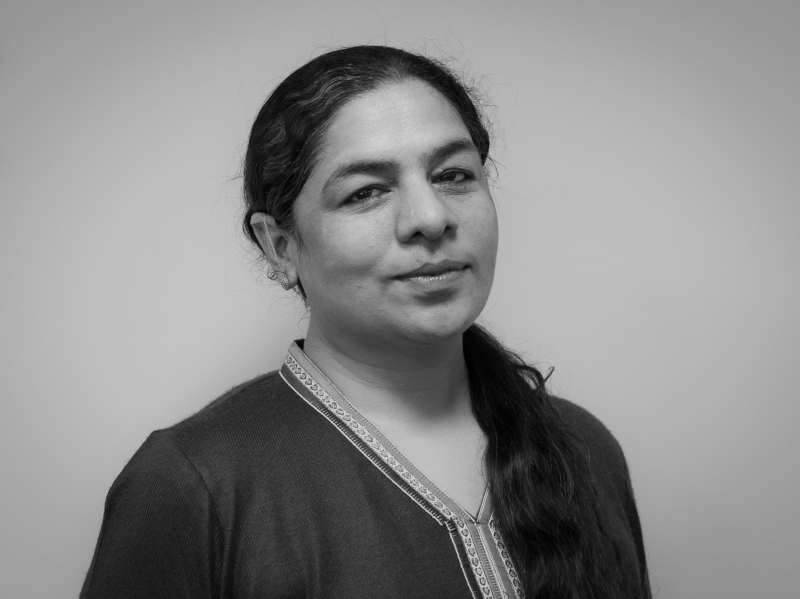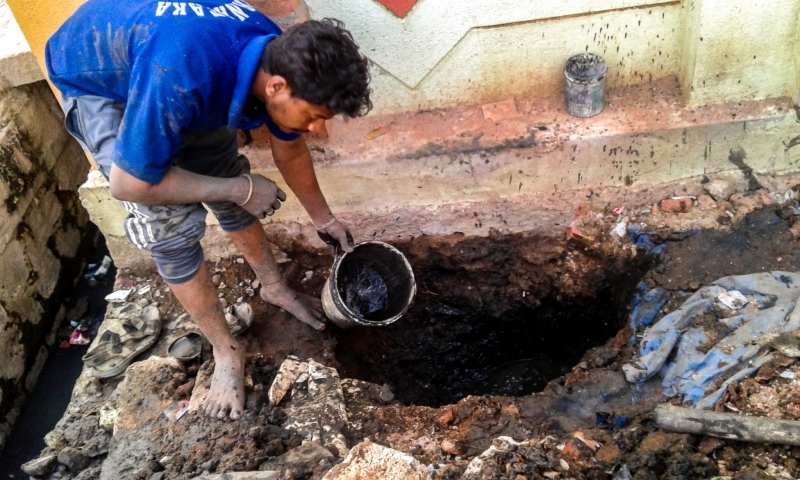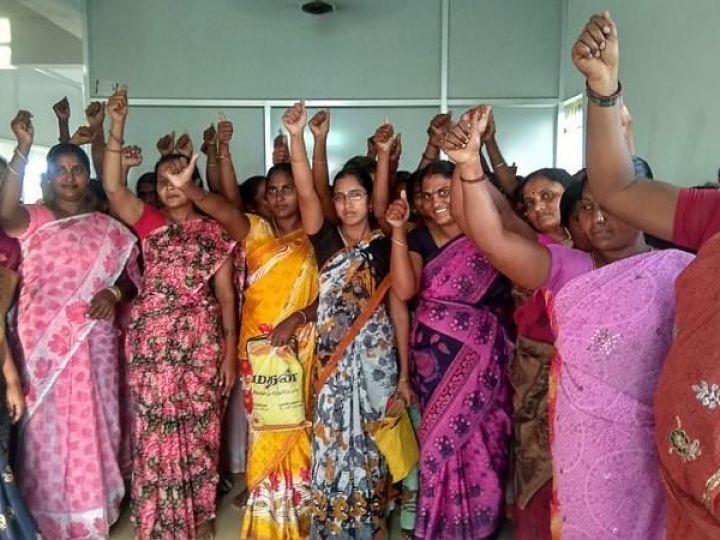“The fight against modern slavery is about ensuring people have the most basic of human rights – freedom. This includes the freedom to control your own body, to refuse certain work or to stop working, to decide when and whom to marry.” Stacked-odds, a report by Walk Free [1]
18 million people are currently enslaved in India. Uniting India’s diverse cultures and institutions are strict hierarchies and deeply embedded systems of oppression – the most dominant of these being patriarchy, casteism and racism. Rights, even if legally protected, are poorly supported by all agencies and institutions – state, family, judiciary, religious institutions, law enforcement. Oppression and othering ranges from silencing to stigma and discrimination, to ostracisation and killing. Intersectionality of vulnerabilities compounds discrimination in complex ways. No single dimension of oppression is enough to understand the experience of, for example, Dalit migrant workers, gender non-conforming children, home based women workers or differently-abled women. Dalits and Adivasis are disproportionately represented among those oppressed, displaced, and trafficked. Laws such as the Schedule Caste and Schedule Tribe (Prevention of Atrocities), the ‘Rehabilitation’ part of the Land Acquisition Act, and the Bonded Labour System (Abolition), are poorly implemented, if at all.
“Women and girls account for [71 per cent] of all victims of modern slavery. […] Modern slavery is enabled by power imbalances. […] Gender stacks the odds against girls from before they are born, to the end of their life.” Stacked-odds, a report by Walk Free.

It is too risky socially, economically, and emotionally, for women in India to claim their rights and legal entitlement to be free of discrimination, domestic violence and sexual harassment. Reporting sexual violence leads to stigmatisation; reporting workplace harassment carries the risk of losing work; speaking out against domestic violence can lead to homelessness and the loss of the security of belonging to a family. Children, deprived of agency in this hierarchy, are vulnerable to manipulation and exploitation by strangers, their families and community. India has the largest number of working children in the world.
This is a brief checklist for concerned stakeholders who would like to engage in change. It maps some of the vulnerabilities – identities of individuals and communities; sectors of the economy; and systemic flaws – that raise the risk of modern and persisting forms of slavery. All of these vulnerabilities have been exacerbated – and new ones exposed – by the pandemic.
Identity
Caste: Dalits and other oppressed castes are subject to several forms of discrimination that raise their vulnerability to exploitation and enslavement. Impoverishment and lack of access to resources is endemic among Dalits due to historic oppression. Some communities are forced into ‘traditional occupations’ such as manual scavenging. 95 - 98 % of manual scavengers are Dalit women. The current pandemic has exacerbated and added to the existing deprivation and oppression of Dalits and other impoverished communities. Caste is a crosscutting factor that intersects with almost all the identities, sectors and systems listed below.
Women and girls: The pandemic has disproportionately impacted girls and women, putting them at further risk of early marriage, early pregnancy, poverty, trafficking and violence. A 2021 policy brief by the Right to Education Forum states that 10 million girls in secondary school are at risk of dropping out due to the COVID-19 pandemic; 1.6 million girls aged 11 to 14 years are currently out of school.
Adult women – transwomen, informal workers, street vendors, sex workers, farm workers, factory-based workers – have been pushed into high levels of indebtedness. Over the last year, many have lost work and run out of their meagre savings. They are navigating this time with no back up, no social security and no respect from employer or government, often having to contend with domineering partners and male relatives.
Gender and sexual minorities: Gender and sexual minorities experience extreme marginalization due to the social stigma against their identity and/or work. Many of them are forced into begging and sex work to support themselves. Most of them depend on informal low paying work and have no savings and little social capital. Those who are daily wage workers or have low incomes and are unable to afford good housing or private transport were seen as active COVID-19 carriers. This led to further stigma and reduced their opportunities to work. Restrictions on movement further limited the few safe spaces they could access. This has left them extremely vulnerable and exposed to trafficking and enslavement.
Indigenous communities: Indigenous communities are often culturally and geographically isolated. They are constantly pushed further into impoverishment and made vulnerable to enslavement as they are displaced, often several times over, as the State deems them expendable collateral damage to the cause of development (dams, railway lines, mining etc.) and a threat to Forest Department models of ‘conservation’. During the pandemic, there have been several attempts to forcefully displace tribal communities in mineral-rich areas.

Sectors
Agriculture: The agricultural sector is one of the largest sources of employment and sustenance. It has a long history as a site of enslavement: casteism and financial bondage have forced families to work on farms for little or no wages. These practices are embedded in systems such as BT cotton farming and floriculture which are hotbeds for children forced into bonded labour (indentured servitude). Except under the government run employment guarantee programmes, most women are paid 40-60 % of the amount paid to men. Additionally, in the past year the agricultural sector has been forced into a crisis with ‘reforms’ that are biased to benefit large private sector players despite being opposed against by several farmers’ unions.
Informal workers: Informal workers are, by definition, excluded from the traditional protections and security available to formal workers. For the majority of them, the choice seems to be between unemployment or stigmatised and hazardous jobs. Women in this sector have suffered disproportionate job loss. In the spinning, textile and readymade garment sector, women constitute close to 80 % of the workforce in most factories and industrial hubs, and often face sexual harassment. There are few provisions for social security, health insurance, ESI or pension. Wages are often close to half the minimum wage – which itself is less than half the living wage. Most often, workers are not listed in the factory records, so there is no paper trail.
To further reduce liability, several industries – such as garment manufacturing, carpet weaving and bidi rolling – employ a huge number of ‘home based workers’. These are largely women and children of oppressed communities and their conditions of ‘employment’ are often akin to enslavement. The shutting of factories increases the number of vulnerable persons in this demographic and could increase the number of women and children exploited in this manner. Any family crisis or need may be the tipping point into debt bondage.
Intra- and Interstate-Migrant Workers: Compelled by economic and social forces to move between or within states to find work, migrant workers are vulnerable to exploitation and have little in the way of social networks or legal labour standards to support them. With the first lockdown, they were stranded in cities with no resources, often not having been paid for months. Forced to undertake perilous journeys back to their villages, they were subjected to extreme stigma and carelessness by the government at all stages. With the second wave, even those who were able to return to work are retracing their steps once more.
Systems
Anti-union practices: Workers and worker leaders who have collectivised are blacklisted by both government and business. The COVID-19 lockdowns have led to a shrinking demand for labour. Worker leaders with insecure contracts are least likely to get recalled for work, let alone be able to negotiate fair wages. The lockdowns have put them and their dependants in a very precarious situation. Workers are faced with the difficult choice: losing their jobs by joining a trade union or being isolated by not joining one.
Other groups, such as contract workers and informal workers, especially those with no common workspace they are isolated from each other, such as home-based workers and domestic workers find it difficult to organise at all. Domestic workers unions claim a 70% loss of work and wages.
Labour policy changes: Policy level changes both pre-pandemic and presently that have legitimised, through ‘legal’ changes, the diluting and discrediting labour rights, have intensified the prevalence of slavery-like ‘working conditions’. The vocabulary of worker’s rights is lost in a din of ever-changing terms: from Business and Human ‘Rights’ being replaced by ‘Guidelines’ and now a ‘Voluntary Framework’. All of these enable conversations and roundtables where ‘nothing is mandatory’ for business entities. Riding on this trend are two mutually reinforcing macro-level changes that have led to the deterioration of working conditions and bargaining power of labour. First, there is an increasing trend of informalisation of worker contracts in the formal sector, and second, the dilution of labour laws and its enforcement by state and central government. Whereas previously there was a mechanism to report violations of labour rights, now violations are normalised, including non-payment of wages, denial of social security, reducing the liability of employers for violations and intolerance towards freedom of association of workers.
COVID-19: With the pandemic and the breakdown of the economy, there are several new or exacerbated factors contributing to discrimination against all vulnerable groups. For example, the restrictions on movement and mobility have led to women being trapped within hostile spaces, within abusive spaces and relationships, where the stress can be unbearable. This has led to loss of hard-won freedoms, both at their workplaces and personal spaces. Women, informal workers and migrant workers – where the already impoverished and oppressed are disproportionately employed – have been laid off in large numbers, and do not have enough resources to meet their basic needs. Access to medical services is restricted. For women, the amount of care work and domestic work has increased, with taking on the majority of it and the stress that comes along with it.
Digital divide: With the pandemic, a lot of services from education to relief entitlements to jobs have moved to digital platforms. The disproportionate number of women and girls who lack of access to such platforms has increased the gender gap. According to the recent National Family Health Survey, less than 3 out of 10 women in rural India and 4 out of 10 women in urban India have ever used the internet. The Centre for Catalyzing Change found that there is a crisis of access to digital devices for adolescent girls in India due to affordability and cultural bias. It varies across states from Haryana and Maharashtra where the ratios of access are 100:0 and 93:7 to Telangana where it is 56:44. A similar disparity in access, with all its consequences, can be seen when comparing urban and rural areas, the rich and the impoverished and dominant and oppressed communities.
This is not to say that all government and civil society efforts towards inclusion and equity have failed. There are and have been several attempts. However, those are outnumbered and significantly outweighed by the factors mentioned above.
------------------------------------------------------------------------------------------------------------------------
The NHRF invites different actors within the human rights field to contribute on this blog. The opinions expressed here are those of the authors.
Main photo: Women’s leadership training, in a spinning mill by Rural Women Development Trust (RWDT), Salem, Tamil Nadu.

